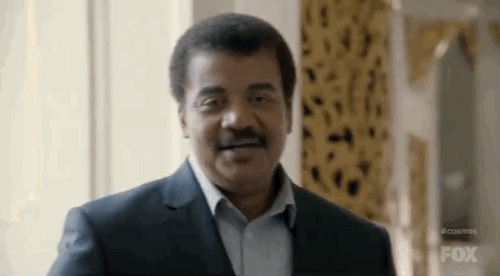Tuesday, 28 October 2014
Cosmos: Hiding in the Light
The fourth part of Neil deGrasse Tyson's Spacetime Odyssey is the most thematically coherent so far, as he takes us through the development of humanity's understanding of light and, hand-in-hand with this, the progress towards the Scientific Method as it is used today.
It begins with the story of Mo-Tzu, an early Chinese scientist - he invented the Camera Obscura, which made use of his discoveries about light, and had come up with a forerunner of the Scientific Method.
Unfortunately the rise of the first Emperor of China, Qin Shi Huangdi, and his totalitarian philosophy of Legalism, destroyed much of Mo-Tzu's learning in great book burnings. This illustrates Tyson's point that freedom of expression is required for science to survive, and it was a thousand years before humans recovered what was lost.
The animation of the China section is really good, capturing the Qin and pre-Qin era very well.
Ibn al-Haytham, in Baghdad during the Islamic golden age of science, is the next subject of discussion. He rediscovered the Camera Obscura and made advances of his own, such as discovering that light moved in straight lines. He laid down another early version of the Scientific Method.
Isaac Newton's work on visible light makes for only a small part of the episode - the real focus is on those who came after him. Perhaps this is because Newton is focused upon in other programmes in the series, or perhaps they just thought that putting the spotlight on some less well known scientists would be more interesting?
150 years after Newton, William Herschel discovered infra-red by accident (it came out of the control part of another experiment he was doing) and, at about the same time, Joseph Fraunhofer rose from poverty to become the leading lensmaker in Bavaria, also discovering the absorption spectra of light - although he didn't know what they were.
This section is my favourite of this episode, for two reasons. First, the visual effects are put to good use to make sound waves appear as if visible (as part of Tyson's explanation of light waves by comparison and contrast with sound waves).
Secondly, Tyson allows himself to become emotional as he explains how the discovery of the absorption spectra from the sun and stars became the foundation of astrophysics - his field. This moment manages to be touching and personal, and if those emotions weren't genuine then Tyson must be a great actor.
As the episode draws to a close, the Ship of the Imagination goes inside a hydrogen atom to show us electrons absorbing and emitting energy and light, and then Tyson takes us through the more modern discoveries of the rest of the electromagnetic spectrum: as well as visible light and infra-red, there are X-rays, radio-waves, gamma rays, and microwaves.
Finally, there are still mysteries about light yet to be uncovered (illuminated?) by science: while spectroscopy allowed the discovery that the universe is expanding, we can't see Dark Matter with any kind of light, so we only know about it because of the effects of gravity.
All in all, this is a fascinating look at the subjects covered.
Subscribe to:
Post Comments (Atom)














No comments:
Post a Comment